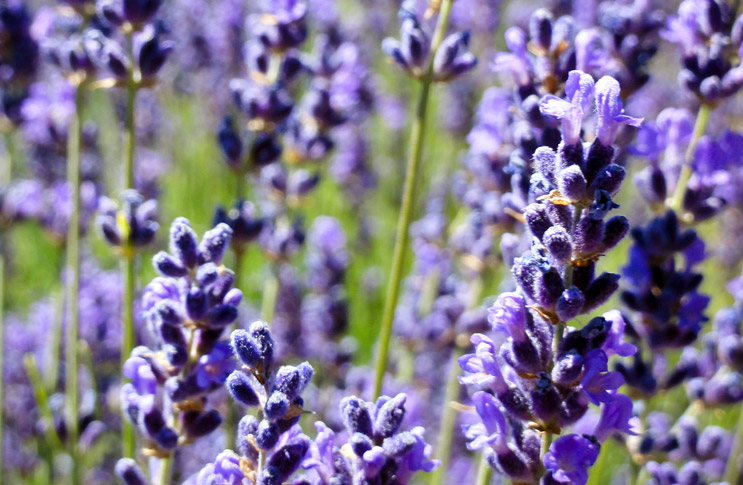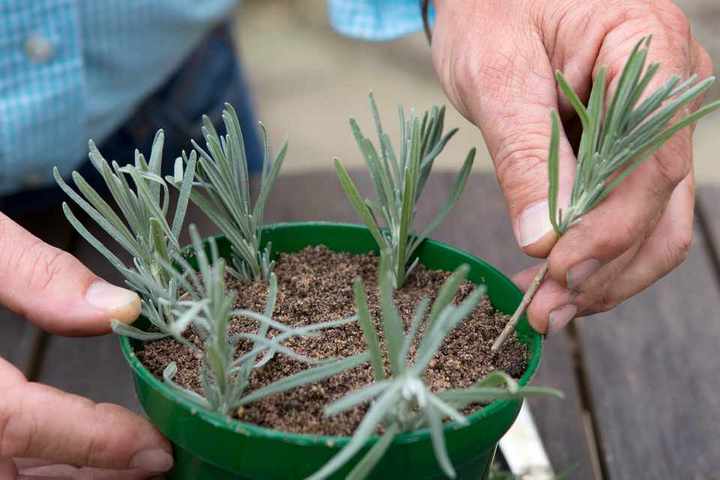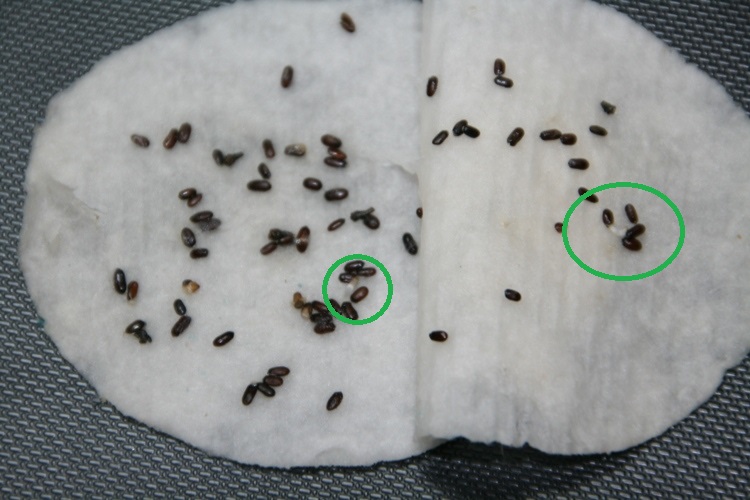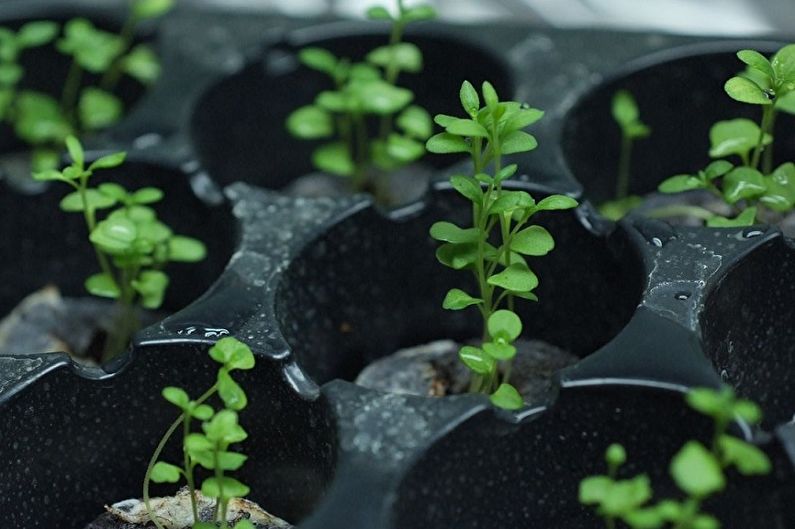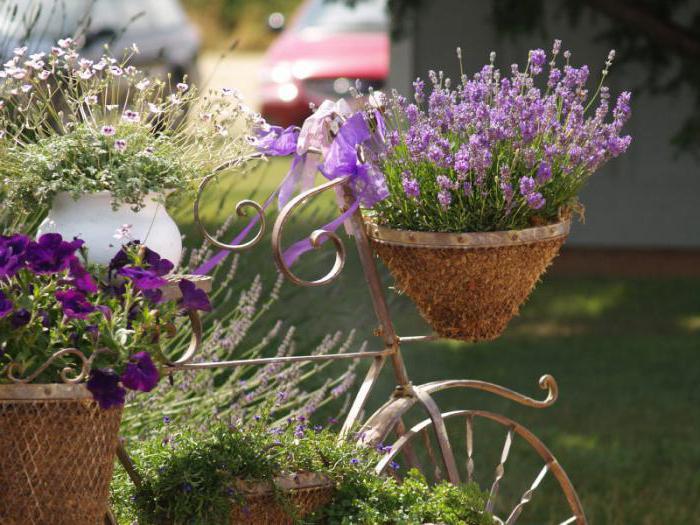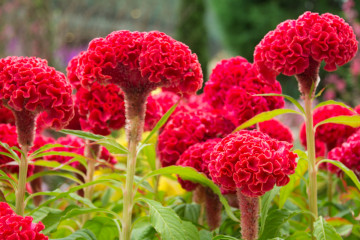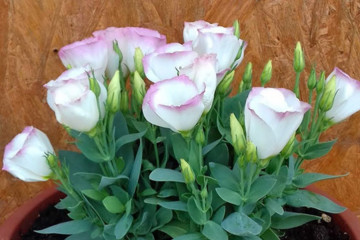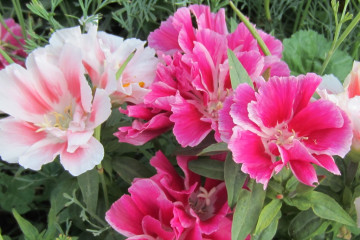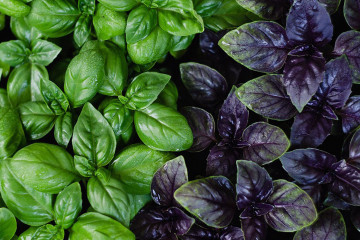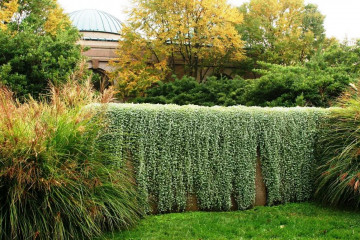Lavender - growing from seeds at home
Content:
Lavender is a Mediterranean perennial plant, without which it is impossible to imagine a modern garden. Descriptions of over 30 types of lavender are presented. Instances with purple, white, blue and even pink inflorescences bloom not only in the vastness of Provence. Blooming lavender gives off a pleasant scent and is considered medicinal. This is what made the plant popular.
Breeding methods for lavender
A fragrant plant can be propagated in many ways.
- Many growers prefer to breed blue eyes by cuttings, since the parental qualities of the bush are completely preserved. For this purpose, you can use green and lignified shoots, which should have 3-4 growth nodes. A suitable soil for cuttings is a mixture of 2 parts humus and sand. The lower bud should be completely in the ground. In order for the cutting to take root, it must be dipped in a stimulant solution for root formation.
- Division of the bush. The shoots of an adult plant must be bent into the prepared furrows and covered with earth. You can plant a plant not earlier than in a year, but with such a reproduction, a large number of new plants will not work.
- It can multiply by self-seeding, so growers are trying to grow lavender from seeds. Growing lavender from seeds at home is a simple process, but it scares many novice growers with its duration. After all, you need not only to collect the seeds, but also to stand in the cold wet sand for about two months, plant them on seedlings at the end of winter, plant them in separate cups and, with the establishment of warm spring weather, transfer them to a permanent place.
To propagate a lavender flower, you can choose the method that does not seem very difficult.
Lavender: growing from seeds at home
You need to collect purple grass for seeds on a sunny morning, when the spikelets of the plant have almost completely faded. Tall shoots are cut and laid out in partial shade to dry. After the leaves of the plant began to rustle, small black seeds are shaken out of the nuts. They are collected and stored in a hermetically sealed container.
Pretreatment of lavender seeds
Not all seeds are suitable for sowing, but those that exude a strong smell even when dry. To get good shoots, they need to be stratified:
- mix with a material that retains moisture (sand, peat, sawdust) and place in a container;
- moisten sowing from a spray bottle;
- the container is not tightly covered with a lid and placed in the cellar.
The process of growing lavender from seeds is quite long, only stratification lasts about two months.
Soil preparation
While the seeds are being stratified, you need to take care of the soil for future crops. The soil can be purchased in specialized stores or you can prepare it yourself: mix 3 parts of leaf turf, which can be dug under a large tree, add 1 part of humus and sand. Since lavender seeds are very small, it is better to sift the soil, heat it in the oven or treat it with a manganese solution.
How to plant lavender seeds at home
After two months have passed, the seeds can be sown.Before filling the containers selected for the seedlings with the prepared soil composition, a drainage layer must be laid on the bottom. Seeds scattered on the ground should be covered with sand and moistened. The container with the planting material is covered with glass (film). Daily ventilation should not be neglected, otherwise mold may appear on the seeds and they will lose germination. For germination, seeds need temperatures between 12 ° C and 20 ° C.
After the appearance of the second leaf in young shoots, you need to pick the seedlings. To do this, take small containers (preferably peat ones), which are filled with a substrate of peat and sand with the obligatory addition of long-acting fertilizer. A small sprout must be removed along with the ground so as not to injure the fragile root system.
Crops need a flower bed well-lit by the sun. Care consists in observing three rules:
- moderate temperature conditions;
- soil moisture, the soil should not be allowed to dry out;
- the hardening process is important: every day the seedlings need to be exposed to the street, but so that the direct rays of the sun do not fall on immature plants. The first days the seedlings are on the street for about an hour, gradually the time increases.
With the establishment of warm weather, the seedlings are planted in a sunny flower bed with light sandy-clay soil. In the first year, young shoots build up the root system, so they need to be planted in deep, spacious pits. The distance between plants should be 80 cm.
Many gardeners prepare special soil. To do this, remove the soil from the planting hole and mix it with sand, humus and mineral fertilizers.
The soil under the planted plant must be mulched, but so that the stem is not covered. Lavender care does not stop all summer long. Before the onset of frost, the stem must be cut off and the roots covered. In the second spring, the overwintered plant has a violent development of shoots, and it blooms.
How to plant lavender seeds outdoors
If you want to decorate your garden with a large array of purple southerner, then you can plant it with seeds. In order for the plants to develop and bloom well, you can use the following step-by-step instructions:
- Lavender shrub will not bloom in the shade. It is necessary to choose an open, sunny place.
- The plant needs soil that does not retain moisture. The site needs to be cleared of weeds, scattered over it with a layer of river sand and dug up. This will increase the breathability of the soil.
- Seeds should be planted in early October to a depth of about 4 mm. Sprinkle the grooves with earth and tamp.
- If the weather is dry, then the crops need to be watered.
- With the onset of frost, the site is covered with leaves so that the snow cover lingers.
Growing lavender in flowerpots
Lavender can be grown in a flowerpot. You can plant the following varieties: Dwarf blue, Nana Alba, Gavrish Voznesensky, Mansted, Lavender Lady, etc. For crops it is worth taking a spacious flowerpot or a long container, but in any case, holes must be drilled in the bottom of the container and placed on a pallet so that excess moisture can drain ... The soil is suitable in the form of a mixture of sand, peat, leafy earth. You can plant a plant in any way: seeds, cuttings, layering.
Rules for planting and caring for lavender shrubs in a flowerpot:
- in a pot, the soil dries out quickly, so you need to water often and not only the root of the flower, but also the shoots. Waterlogging of the soil can cause root rot.Water for irrigation must be settled;
- seedlings must be fed for two months (for 1 liter of water, 2 g of liquid complex fertilizers). Before the appearance of buds, it is better to use nitrogen mixtures, then potassium-phosphorus mixtures, since nitrogen will cause a new growth of leaves, flowering will slow down;
- the light should fall on the plant for 8-10 hours a day, so you will have to use additional lighting with fluorescent lamps;
- with the onset of spring, the flower must be accustomed to sunlight and taken to the balcony for the summer;
- after the bush has lost its color, the crown must be trimmed;
- in the fall, the period between waterings increases. In winter, the soil in the flowerpot is rarely moistened and not abundantly, but the soil should not be allowed to dry out, otherwise the plant will dry out;
- for wintering, the bush needs a moderate temperature. During the winter period, the instance should gain strength;
- if the plant does not grow in spring, then it needs to be urgently transplanted;
- narrow-leaved flowers are not affected by pests, but with poor care, gray rot can develop.
Many gardeners strive to decorate the spaciousness of their garden with unusual English lavender, which attracts with its uniqueness and discreet beauty. Caring for an instance is not difficult at all. With a little more patience and diligence, the blue of the Mediterranean visitor will fill the garden with charm, luxury and spicy scent.
